1-Day Relaxing Dead Sea Experience for Jordan Locals
The Dead Sea, Jordan
1 days

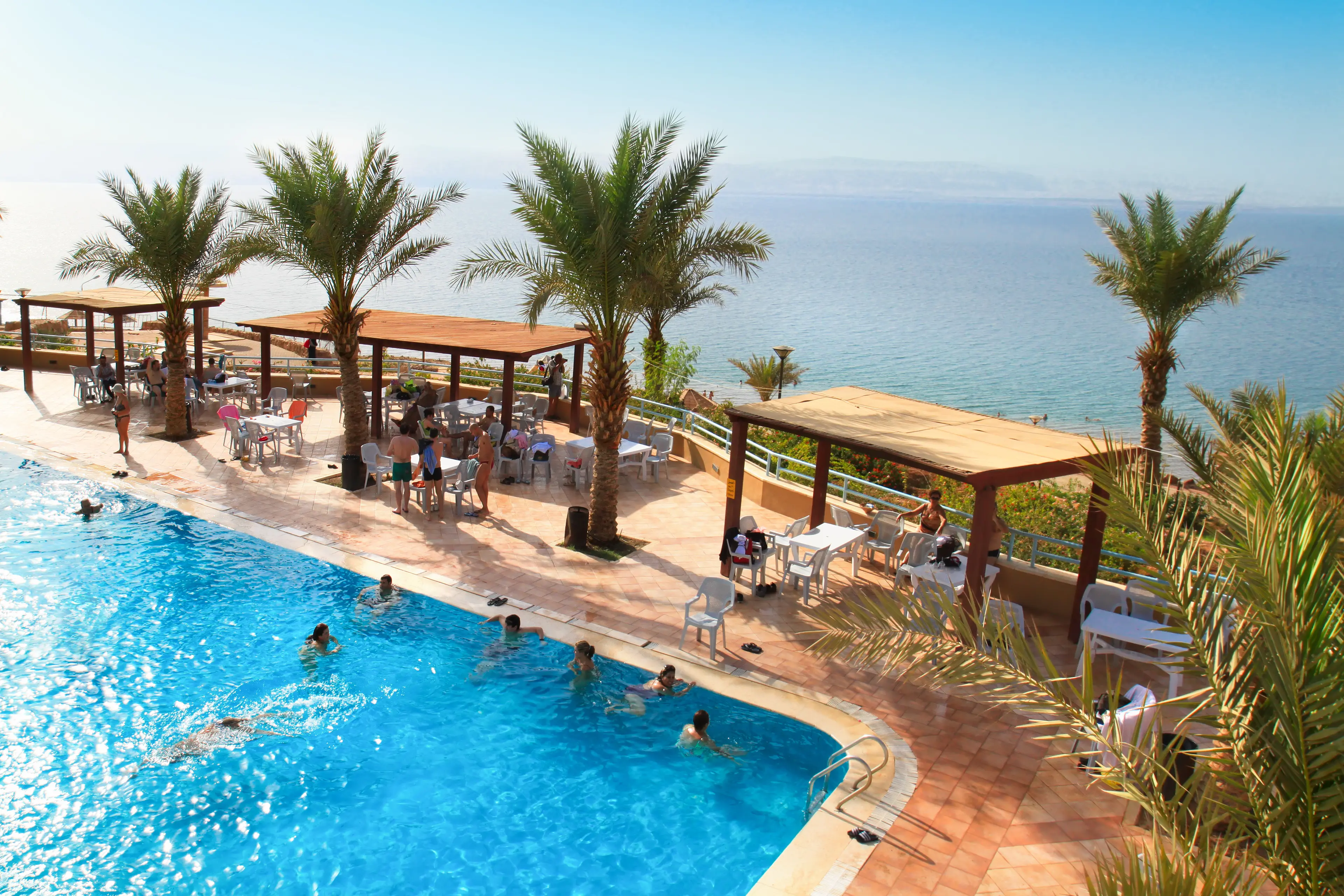

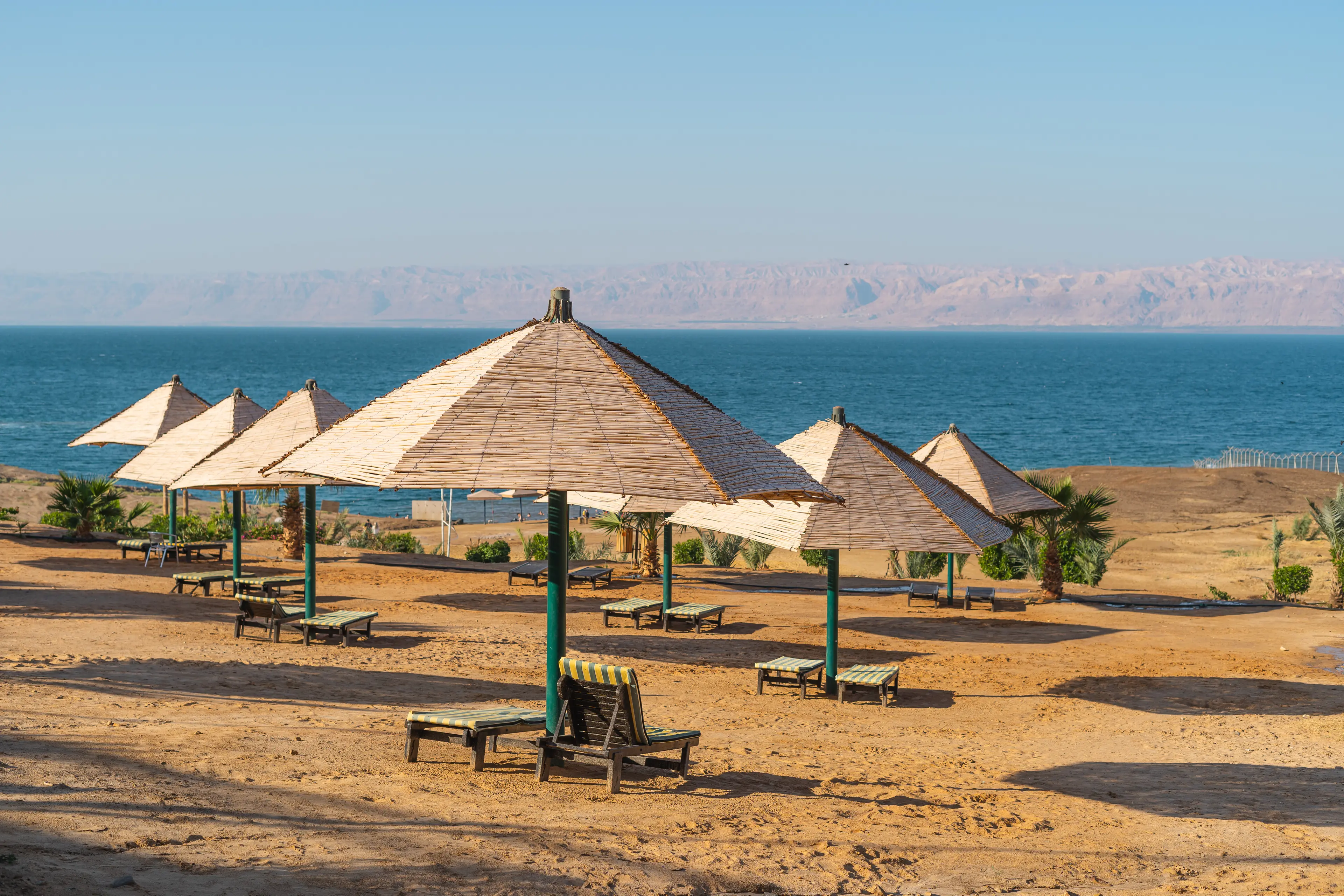
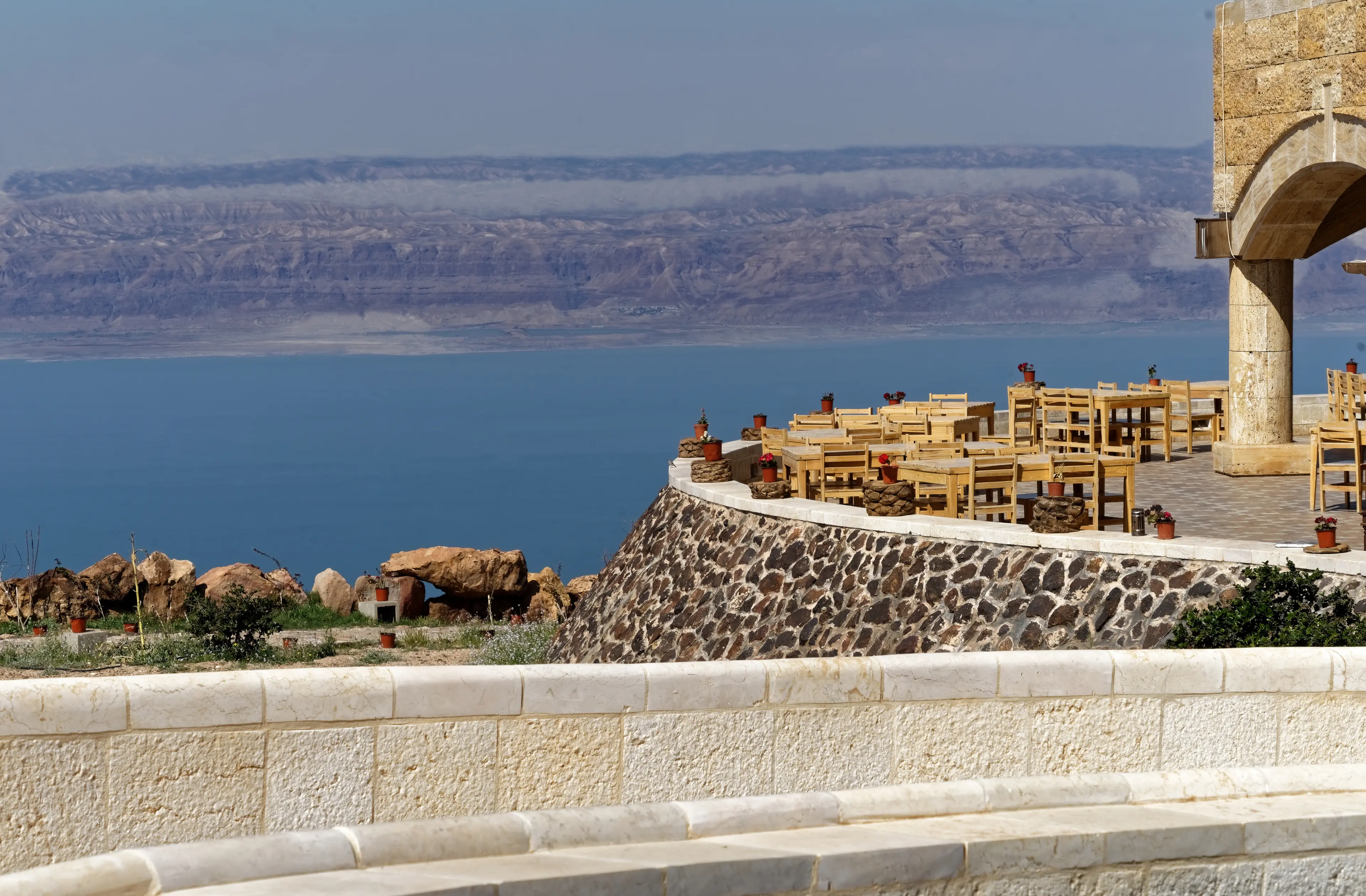
About The Dead Sea, Jordan
Experience the unique sensation of floating effortlessly on the world's saltiest body of water, the Dead Sea, in Jordan. This natural wonder, located at the lowest point on earth, is renowned for its therapeutic properties. The mineral-rich mud and high salt concentration provide natural health and beauty benefits. Nearby, explore the historical sites of Mount Nebo, where Moses is said to have seen the Promised Land, and the mosaic city of Madaba. Enjoy the stunning sunset views over the water, and don't miss the chance to stargaze in the clear desert night. The Dead Sea, Jordan, offers a blend of relaxation, wellness, and history for an unforgettable travel experience.
1-Day Itinerary
Attractions in Itinerary (4)

1Stroll along the beach
Enjoy a leisurely stroll along the serene beaches of the Dead Sea, taking in the unique landscape and tranquil atmosphere.

2Local market
Explore the local market to buy unique souvenirs, local products, and experience the vibrant culture of Jordan.

3Applying Dead Sea mud
Experience the therapeutic benefits of the mineral-rich mud, which is reputed for its healing properties. This activity is usually done at the beachfront.
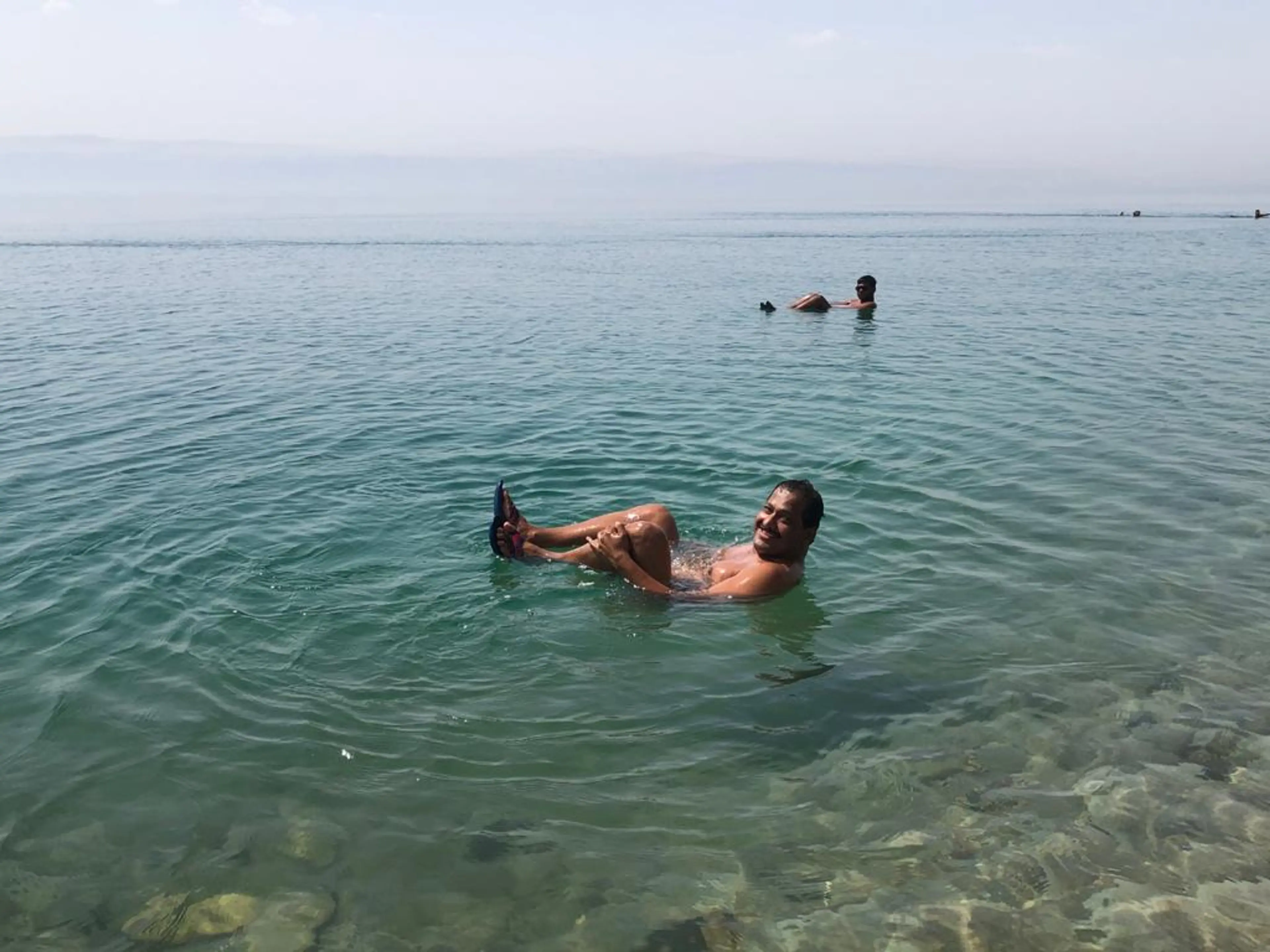
4Swimming in the Dead Sea
Experience the unique sensation of floating in the Dead Sea, known for its high salt content and therapeutic mud.
Local Food and Drinks (12)
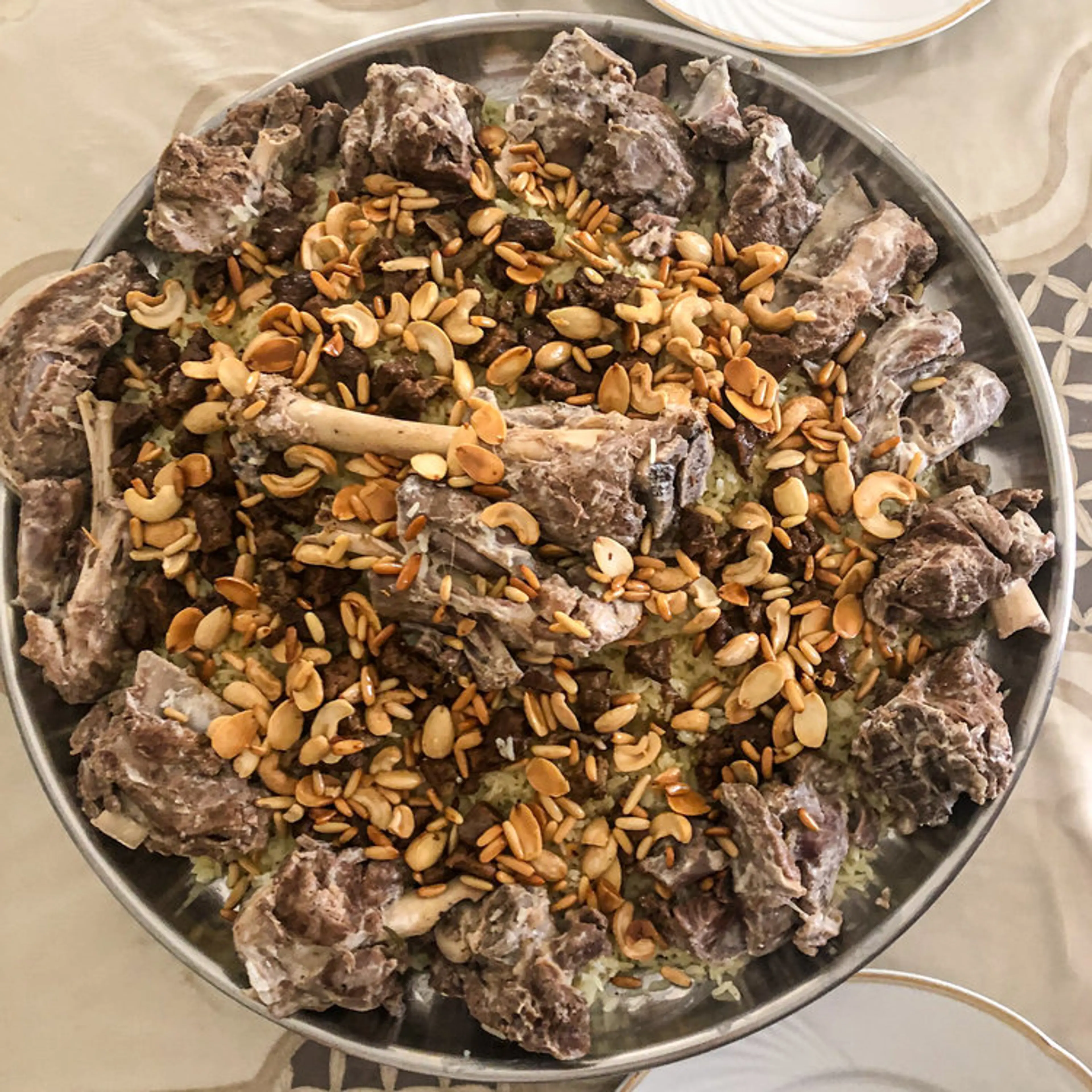
Mansaf
This is Jordan's national dish, made of lamb cooked in a sauce of fermented dried yogurt and served with rice or bulgur. It is a must-try when visiting the Dead Sea region.

Zarb
A traditional Bedouin dish, Zarb is prepared in a submerged oven, giving the meat and vegetables a unique smoky flavor. It's a popular dish in the Dead Sea region.
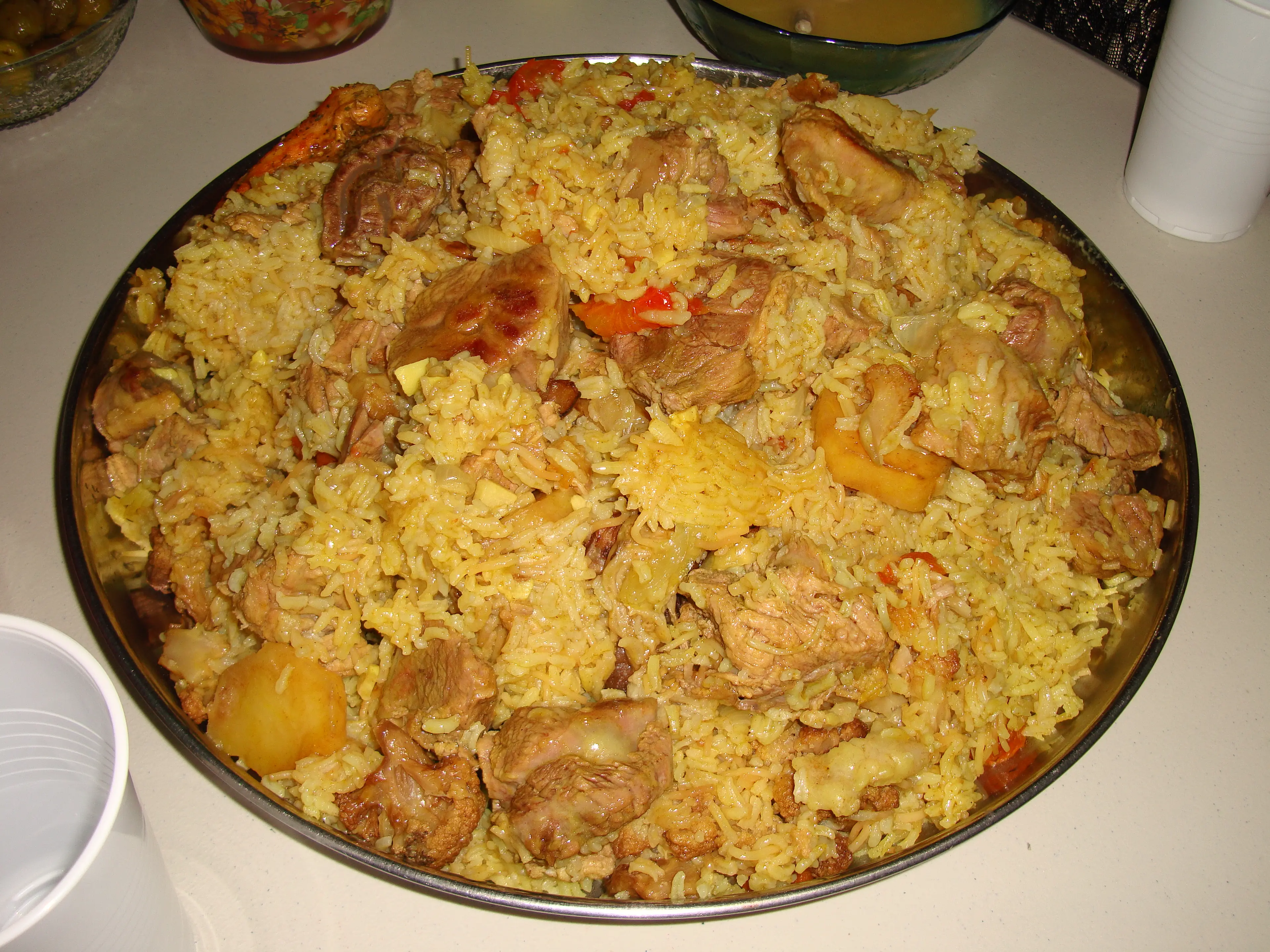
Maqluba
Maqluba, which translates to 'upside down', is a traditional Jordanian dish made of rice, meat, and vegetables, cooked in a pot, then flipped over onto a plate for serving. It's a common dish in the Dead Sea area.

Mutabbal
Mutabbal is a popular Jordanian appetizer made from eggplant, tahini, garlic, and lemon. It's often enjoyed with fresh bread and is a staple in the Dead Sea region.
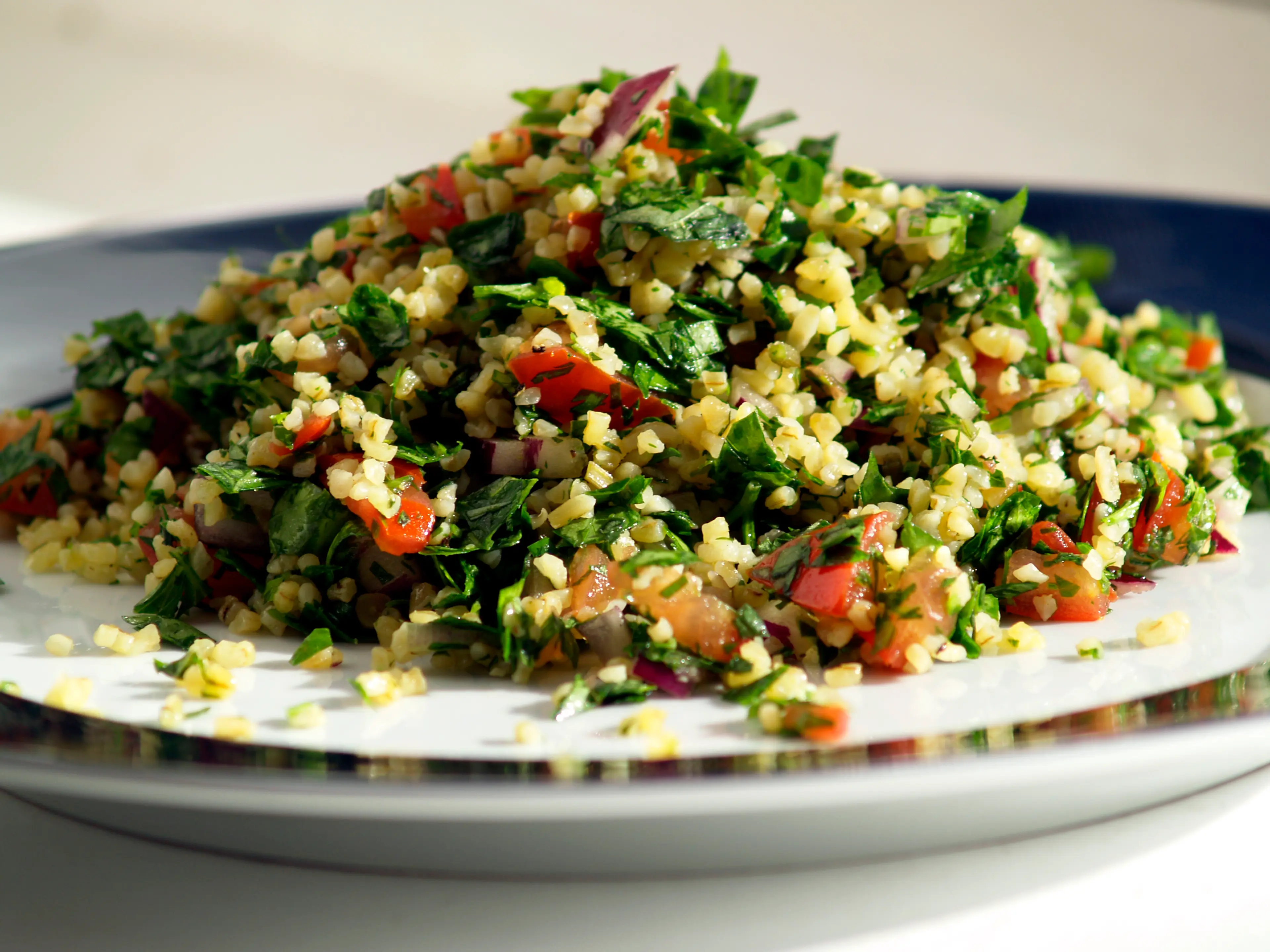
Tabbouleh
Tabbouleh is a refreshing salad made from finely chopped parsley, tomatoes, mint, onion, bulgur, and seasoned with olive oil, lemon juice, salt, and pepper. It's a common dish in the Dead Sea region.

Falafel
Falafel is a deep-fried ball or patty made from ground chickpeas, fava beans, or both. It's a popular snack or breakfast food in the Dead Sea region.

Knafeh
Knafeh is a traditional Middle Eastern dessert made with thin noodle-like pastry, or alternatively fine semolina dough, soaked in sweet, sugar-based syrup, and layered with cheese. It's a popular dessert in the Dead Sea region.
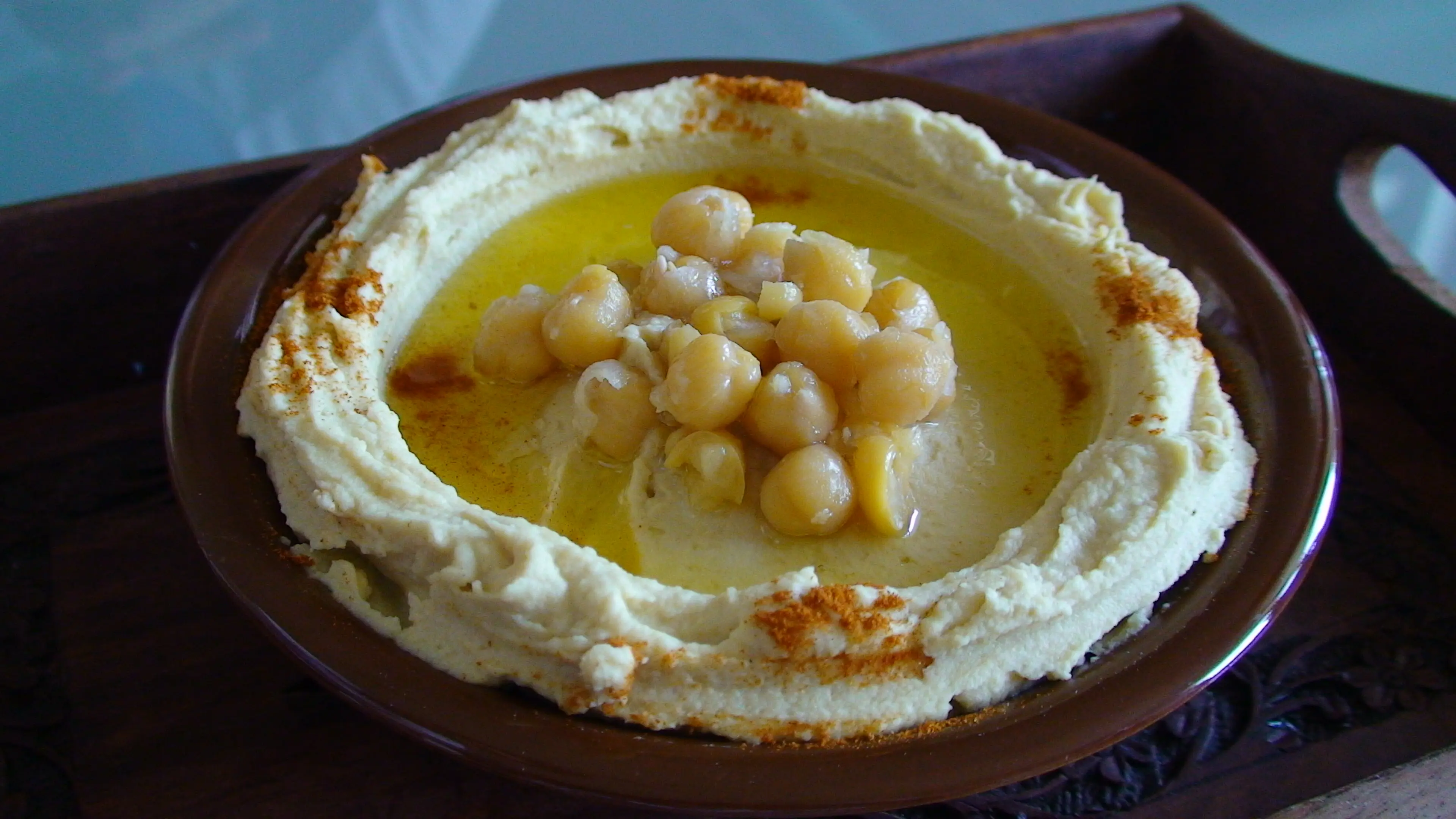
Hummus
Hummus is a creamy dip made from mashed chickpeas, tahini, olive oil, lemon juice, salt, and garlic. It's a staple in the Dead Sea region and is often enjoyed with fresh bread.
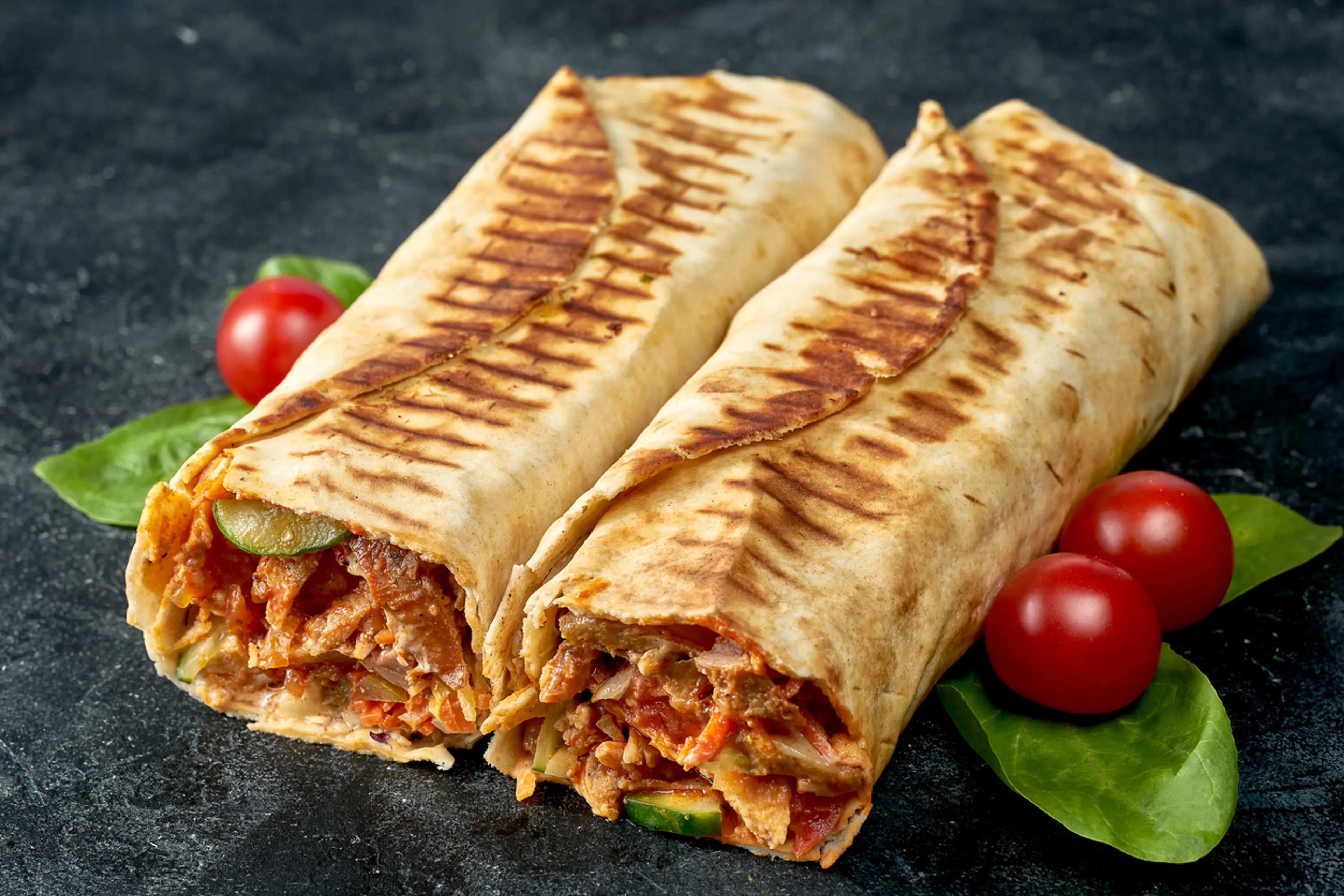
Shawarma
Shawarma is a Middle Eastern meat preparation, where lamb, chicken, turkey, beef, veal, or mixed meats are placed on a spit and may be grilled for as long as a day. It's a popular street food in the Dead Sea region.
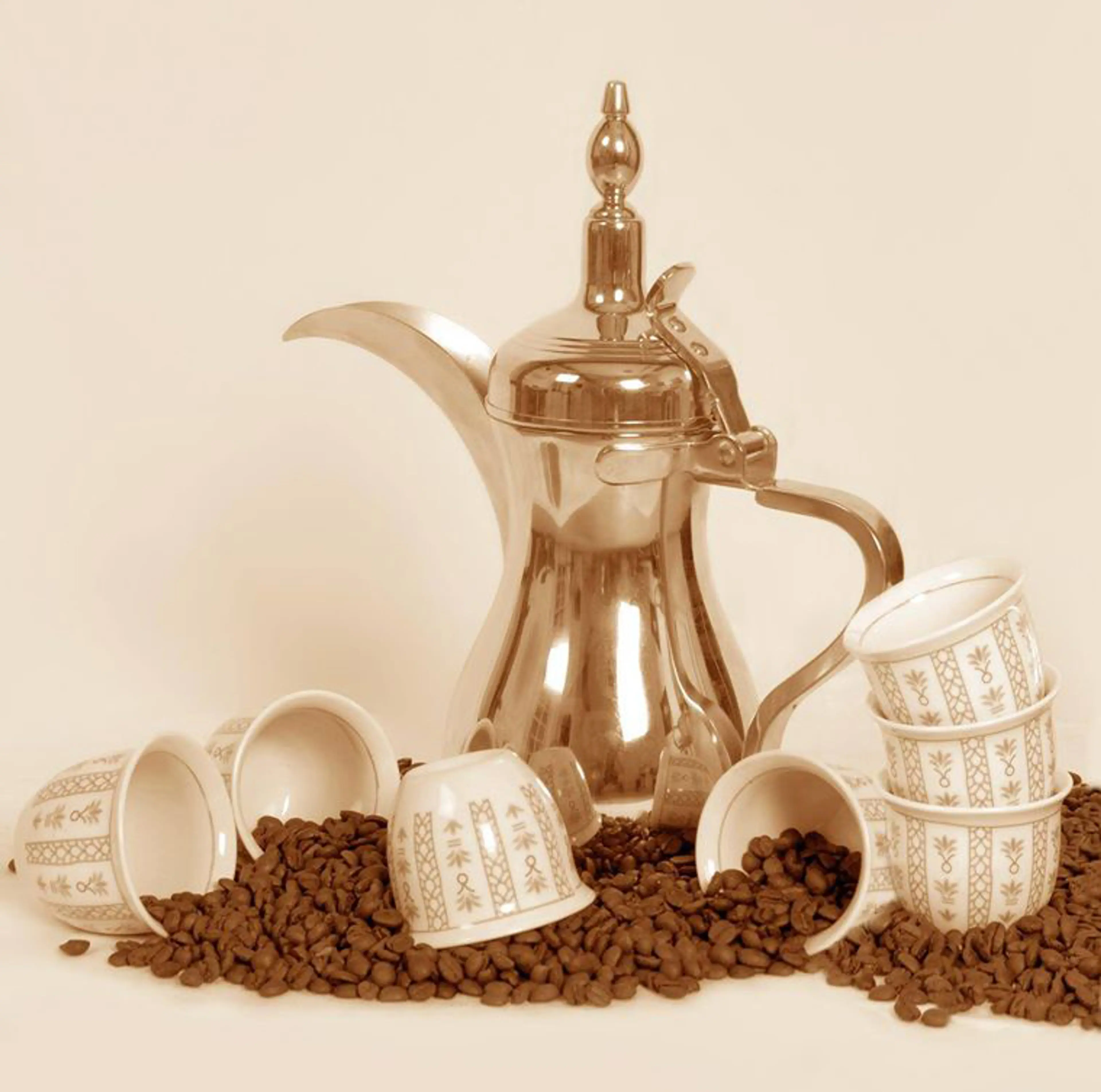
Arabic Coffee
Arabic Coffee, also known as Turkish coffee, is a method of preparing unfiltered coffee. It's a popular beverage in the Dead Sea region and is often served with dates.
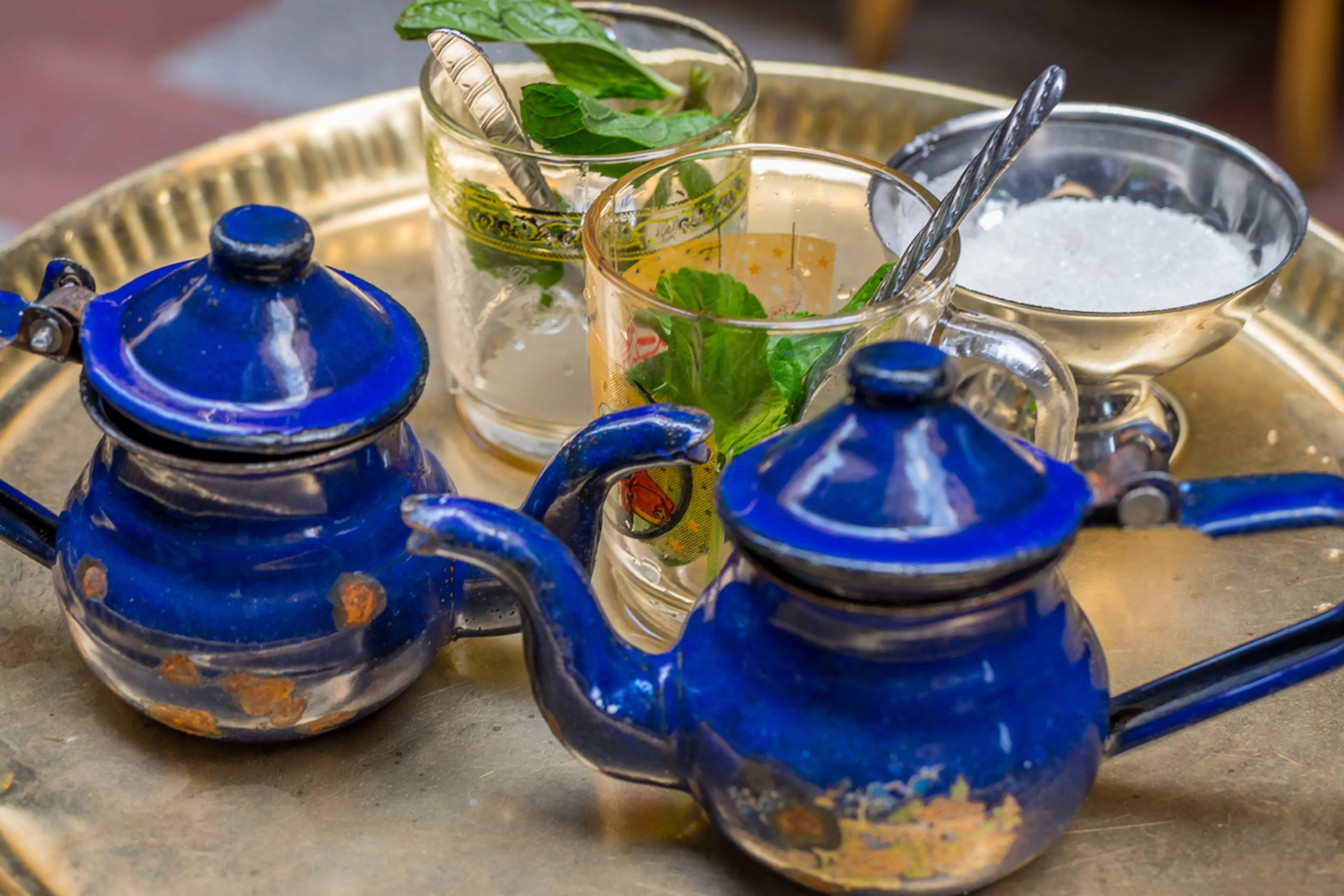
Mint Tea
Mint Tea is a traditional Jordanian drink made from dried mint leaves and black tea. It's a common drink in the Dead Sea region and is often served after meals.

Limonana
Limonana is a type of lemonade made from fresh mint leaves and lemon. It's a refreshing drink that's popular in the Dead Sea region, especially during the hot summer months.
Best time to visit
The best time to visit the Dead Sea, Jordan is during the spring (March to May) and autumn (September to November) months. During these periods, the weather is pleasantly warm with average temperatures ranging from 20°C to 30°C, ideal for floating in the salty waters of the Dead Sea and exploring nearby attractions. The summer months (June to August) can be extremely hot, with temperatures often exceeding 40°C, which might be uncomfortable for some tourists. The winter months (December to February) are cooler and can sometimes see rainfall, but it's still possible to visit during this time as the Dead Sea remains warm enough for swimming.
How to get around
Private Car
The most convenient way to get around the Dead Sea area in Jordan is by private car. You can hire a car from Amman or from the airport and drive to the Dead Sea. The roads are well-maintained and the journey is scenic. This gives you the flexibility to explore the area at your own pace.
Taxi
Taxis are readily available in Jordan and can be a convenient way to travel to and from the Dead Sea. You can negotiate the fare in advance. Some taxis offer day trips to the Dead Sea from Amman or other major cities.
Bus
There are public buses that run from Amman to the Dead Sea. The bus station in Amman is called Abdali and buses to the Dead Sea depart from here. This is a cost-effective way to travel but it may not be as convenient as a private car or taxi.
Ridesharing
Ridesharing services like Uber and Careem operate in Jordan. You can use these services to travel to the Dead Sea. However, availability may be limited in the Dead Sea area compared to Amman.
Tour Operator
Many tour operators offer day trips or multi-day tours to the Dead Sea. This usually includes transportation, a guide, and sometimes meals and entrance fees. This is a hassle-free way to visit the Dead Sea as everything is arranged for you.
Bicycle
The Dead Sea area is quite hilly and may not be suitable for cycling for everyone. However, for the adventurous and fit, renting a bicycle can be an interesting way to explore the local area. Be prepared for a challenging ride and bring plenty of water.
Foot
The Dead Sea resorts and beaches are quite spread out, so walking may not be the most efficient way to get around. However, once you are at a specific location, such as a resort or public beach, getting around on foot is easy and pleasant.
Important information
Currencyد.ا JOD
Time zoneUTC+2
Driving sideRight
Emergency phoneAmbulance: 191; Fire: 193; Police: 192
Drinking waterYes, but some opt for bottled water
Power sockets
Voltage230 V
Things to know about The Dead Sea, Jordan as a first time visitor
1
The Dead Sea is the lowest point on earth, sitting 429 meters below sea level.
2
The water in the Dead Sea is extremely salty, with a salinity of about 34%, which is almost 10 times saltier than regular seawater.
3
Due to the high salt content, it's impossible to sink in the Dead Sea. You can easily float on the surface.
4
The mud and water of the Dead Sea have therapeutic properties, and are often used in treatments for skin diseases like psoriasis and eczema.
5
The Dead Sea is not suitable for swimming due to its high salt content. It's more for floating and relaxing.
6
Avoid getting the salty water in your eyes or mouth as it can be very painful and unpleasant.
7
It's recommended to wear water shoes or sandals while in the Dead Sea to protect your feet from the sharp salt crystals on the seabed.
8
The climate at the Dead Sea is warm and sunny all year round. The average temperature in summer (June to August) is around 86-104°F (30-40°C), while in winter (December to February) it's around 68-77°F (20-25°C).
9
The UV rays at the Dead Sea are weaker due to its low altitude, but it's still recommended to use sun protection.
10
There are no fish or any kind of swimming life forms in the Dead Sea due to the high salt content.
11
The Dead Sea is actually a lake, bordered by Jordan to the east and Israel and Palestine to the west.
12
The Dead Sea is rapidly shrinking, losing about a meter of water each year.
13
Public transportation to the Dead Sea is limited, so it's recommended to rent a car or take a taxi.
14
There are several luxury hotels and resorts along the Jordanian coast of the Dead Sea, offering spa treatments and therapeutic services.
15
Drinking water is not readily available at the Dead Sea, so it's recommended to bring your own.
16
There are no restaurants or cafes directly on the beach, so consider packing some snacks.
17
The Dead Sea region is generally safe for tourists, but it's always recommended to stay informed about the current political situation.
18
The official currency in Jordan is the Jordanian Dinar (JOD). Credit cards are widely accepted in hotels and resorts, but it's good to have some cash for small vendors.
19
The official language in Jordan is Arabic, but English is widely spoken in tourist areas.
20
Jordan operates on Eastern European Time (EET) and observes daylight saving time.
Basic Arabic to know as a first time visitor
English phrase | Native phrase | Pronunciation | When to use it |
|---|---|---|---|
Hello | مرحبا | Marhaba | Greeting someone |
Goodbye | وداعا | Wadaeaan | Leaving someone |
Please | من فضلك | Min fadlak | When asking for something |
Thank you | شكرا | Shukran | After receiving something |
Yes | نعم | Naam | Agreeing with someone |
No | لا | La | Disagreeing with someone |
Excuse me | عفوا | Afuwan | Getting someone's attention |
I'm sorry | أنا آسف | Ana asef | Apologizing |
Do you speak English? | هل تتكلم الإنجليزية؟ | Hal tatakallam al'injliziya? | When needing to communicate in English |
I don't understand | أنا لا أفهم | Ana la afham | When you don't understand what is being said |
Where is the bathroom? | أين الحمام؟ | Ayna alhammam? | When you need to find a restroom |
How much does this cost? | بكم هذا؟ | Bikam hadha? | When wanting to know the price of something |
I need a doctor | أحتاج إلى طبيب | Ahtaj ila tabib | In case of a medical emergency |
Help | مساعدة | Musaeadah | When needing assistance |
Water | ماء | Maa | When asking for water |
Food | طعام | Taam | When asking for food |
Hotel | فندق | Fanduq | When looking for a place to stay |
Taxi | تاكسي | Taksi | When needing transportation |
Where is...? | أين هو...؟ | Ayna hu...? | When asking for directions |
Can I use your phone? | هل يمكنني استخدام هاتفك؟ | Hal yumkinuni istikhdam hatifik? | When needing to make a phone call |
Packing List
Clothing
Lightweight clothing
Swimwear
Water shoes
Sunglasses
Hat
Light jacket or sweater for cooler evenings
Toiletries
Sunscreen
After-sun lotion
Insect repellent
Personal hygiene items (toothbrush, toothpaste, deodorant)
Travel-size shampoo and conditioner
Lip balm with SPF
Travel documents and essentials
Passport
Driver's license or ID card
Credit and debit cards
Cash in local currency
Travel insurance documents
Hotel and transportation reservation confirmations
Emergency contact information
Electronics and gadgets
Smartphone
Charger for smartphone
Camera
Charger for camera
Power bank
Travel adapter
Miscellaneous items
Travel guidebook
Map of the area
Snacks
Bottled water
Travel pillow
Earplugs
First aid kit
Towels for the beach
Weather Conditions
The Dead Sea, located in Jordan, is a popular tourist destination known for its unique properties and therapeutic benefits. However, the weather can greatly impact your visit, so it's important to plan accordingly. The region experiences a desert climate, which means it's typically hot and dry throughout the year. Summer temperatures (June to August) can reach up to 104°F (40°C), so it's crucial to stay hydrated and protect yourself from the sun. Consider visiting early in the morning or late in the afternoon when the sun is less intense. Winter (December to February) is milder, with temperatures ranging from 60°F to 68°F (15°C to 20°C), making it a more comfortable time for sightseeing. However, it can occasionally drop to around 50°F (10°C) so packing a light jacket is advisable. Spring (March to May) and autumn (September to November) are considered the best times to visit the Dead Sea. During these seasons, temperatures are typically around 77°F to 86°F (25°C to 30°C), providing a pleasant climate for outdoor activities. Regardless of when you visit, remember that the Dead Sea's high salt concentration can be dehydrating. Always carry water with you and apply plenty of sunscreen, even in the cooler months, as the sun can still be strong. Lastly, while the Dead Sea is generally sunny, sudden changes in weather can occur, such as sandstorms in the spring or flash floods in the winter. Therefore, it's always a good idea to check the local weather forecast before planning your day.
| Month | Hi / Lo (°C) | Weather Overview |
|---|---|---|
January | 18° / 8° | January is the coldest month in the Dead Sea, Jordan. It's a great time to visit if you prefer cooler temperatures. |
February | 20° / 10° | February sees a slight increase in temperature, but it's still relatively cool. The weather is pleasant for sightseeing. |
March | 23° / 13° | March marks the beginning of spring. The weather is warm but not too hot, perfect for outdoor activities. |
April | 26° / 16° | April is a bit warmer, but still comfortable. It's a great time to visit for swimming and sunbathing. |
May | 30° / 20° | May is the start of the hot season. The weather is hot but bearable, and the sea is perfect for floating. |
June | 33° / 23° | June is quite hot. It's a great time to visit if you love the heat and want to spend time floating in the sea. |
July | 35° / 25° | July is the hottest month in the Dead Sea, Jordan. It's perfect for those who love extreme heat and want to experience the therapeutic muds. |
August | 35° / 25° | August is also very hot. It's a great time to visit if you want to experience the therapeutic properties of the Dead Sea. |
September | 33° / 23° | September sees a slight decrease in temperature. It's still hot, but the evenings are cooler. |
October | 30° / 20° | October is a great time to visit. The weather is warm during the day and cooler in the evenings. |
November | 25° / 15° | November marks the beginning of the cooler season. It's a great time to visit if you prefer milder temperatures. |
December | 20° / 10° | December is a cool month. It's a great time to visit if you want to avoid the heat and enjoy the serene beauty of the Dead Sea. |
Did you know?
Places near by The Dead Sea, Jordan
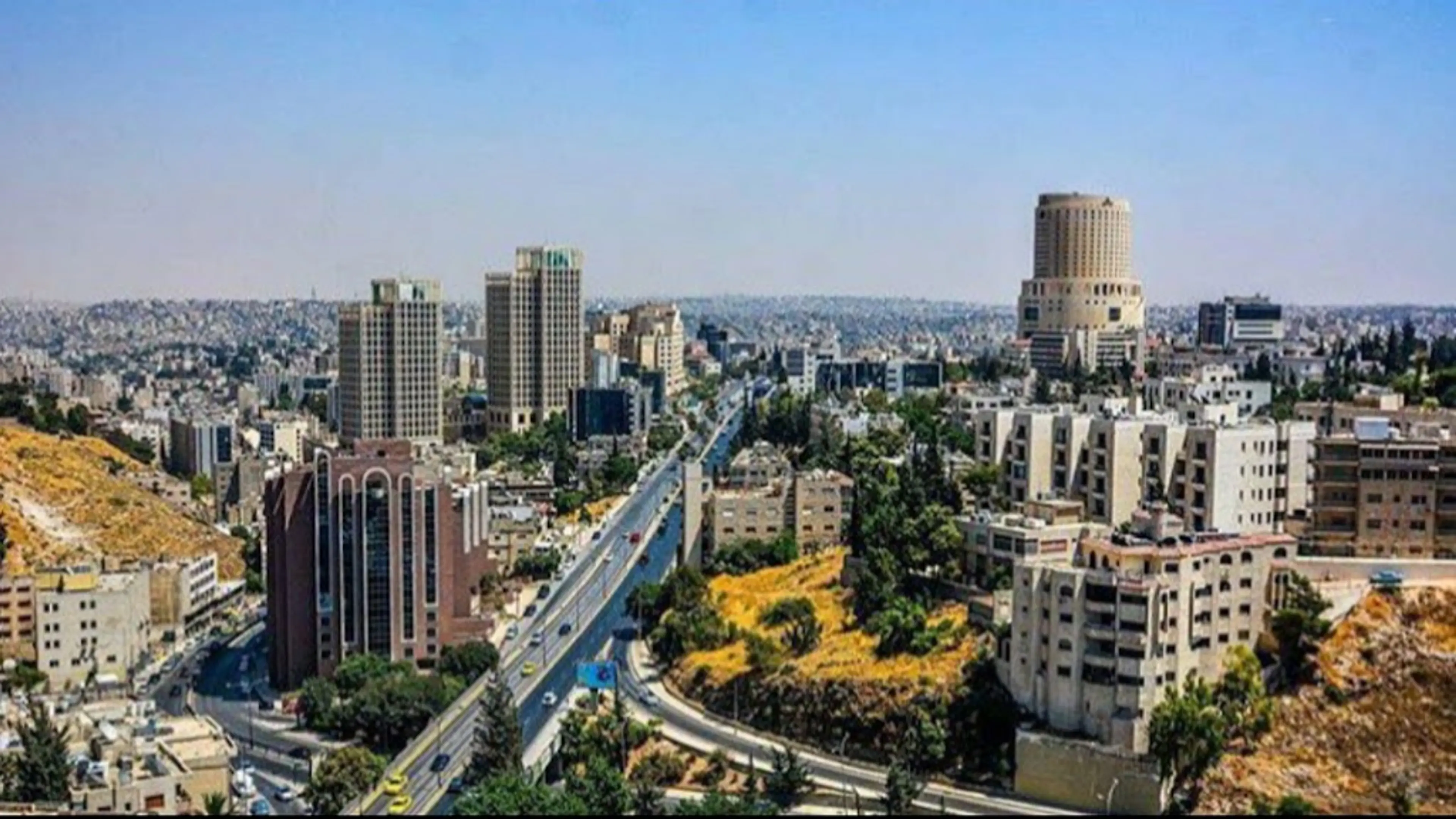
Amman
The capital of Jordan, known for its ancient ruins and modern shopping areas
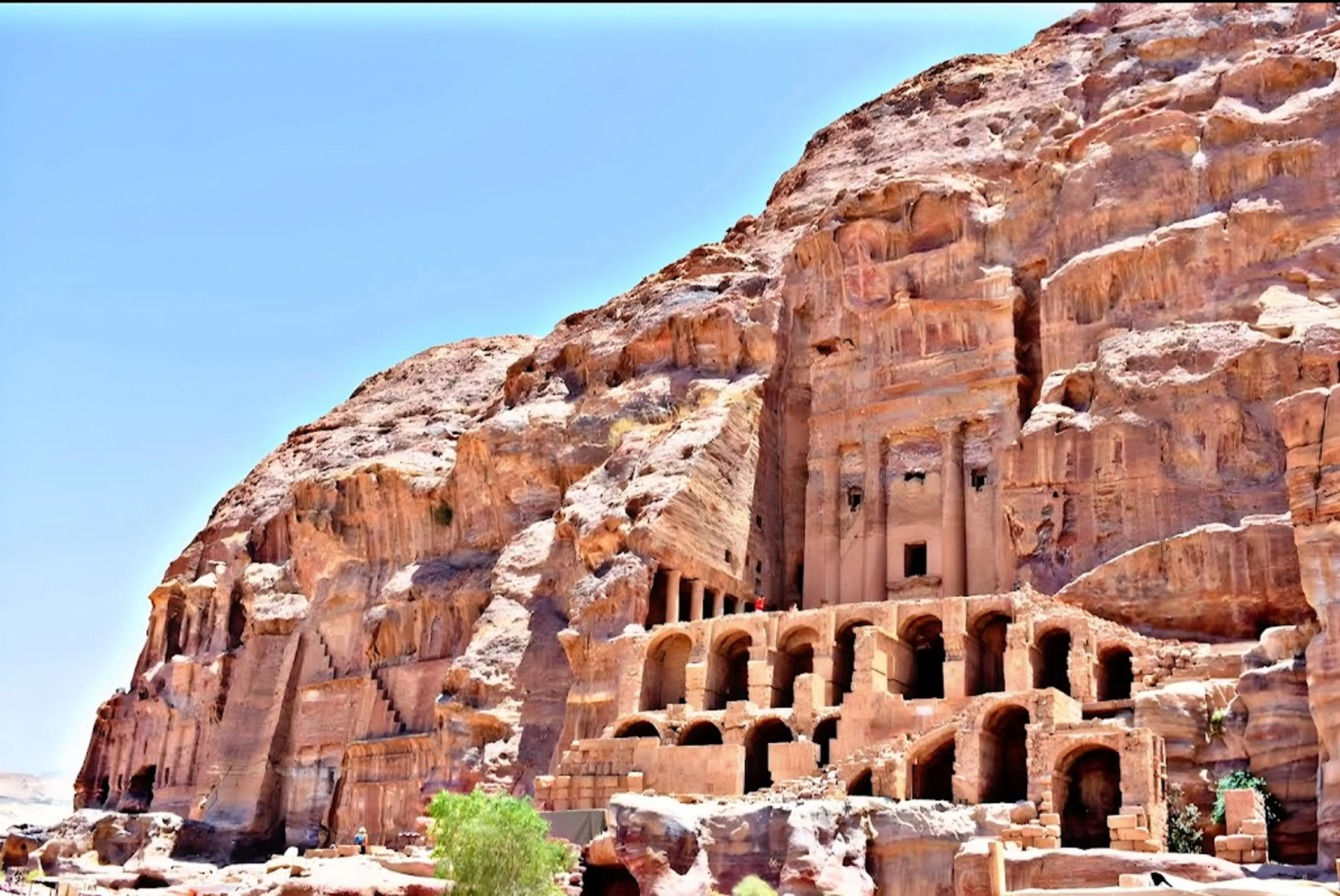
Petra
Historical and archaeological city famous for its rock-cut architecture and water conduit system
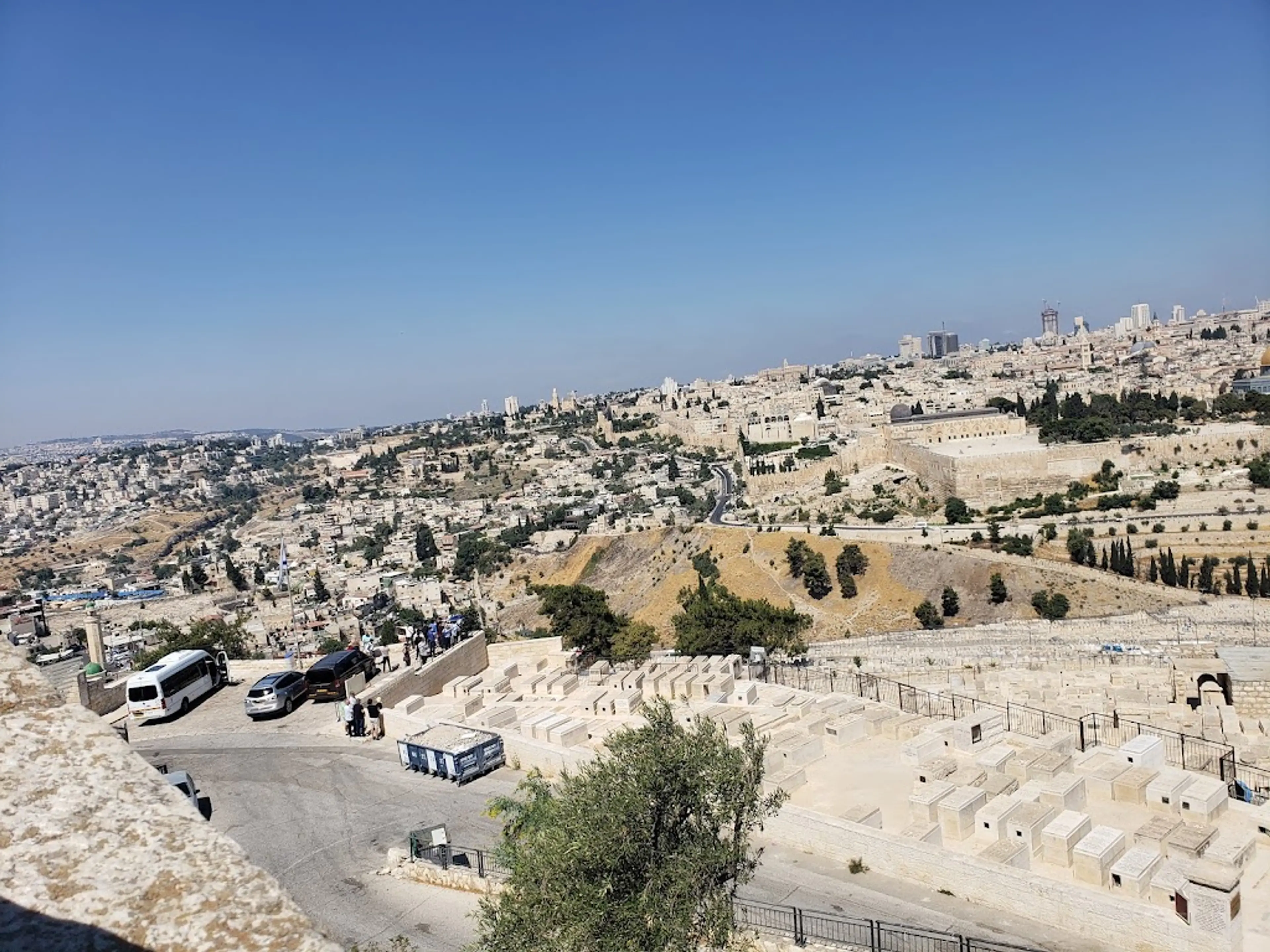
Jerusalem
One of the oldest cities in the world, home to important religious sites for Jews, Christians, and Muslims
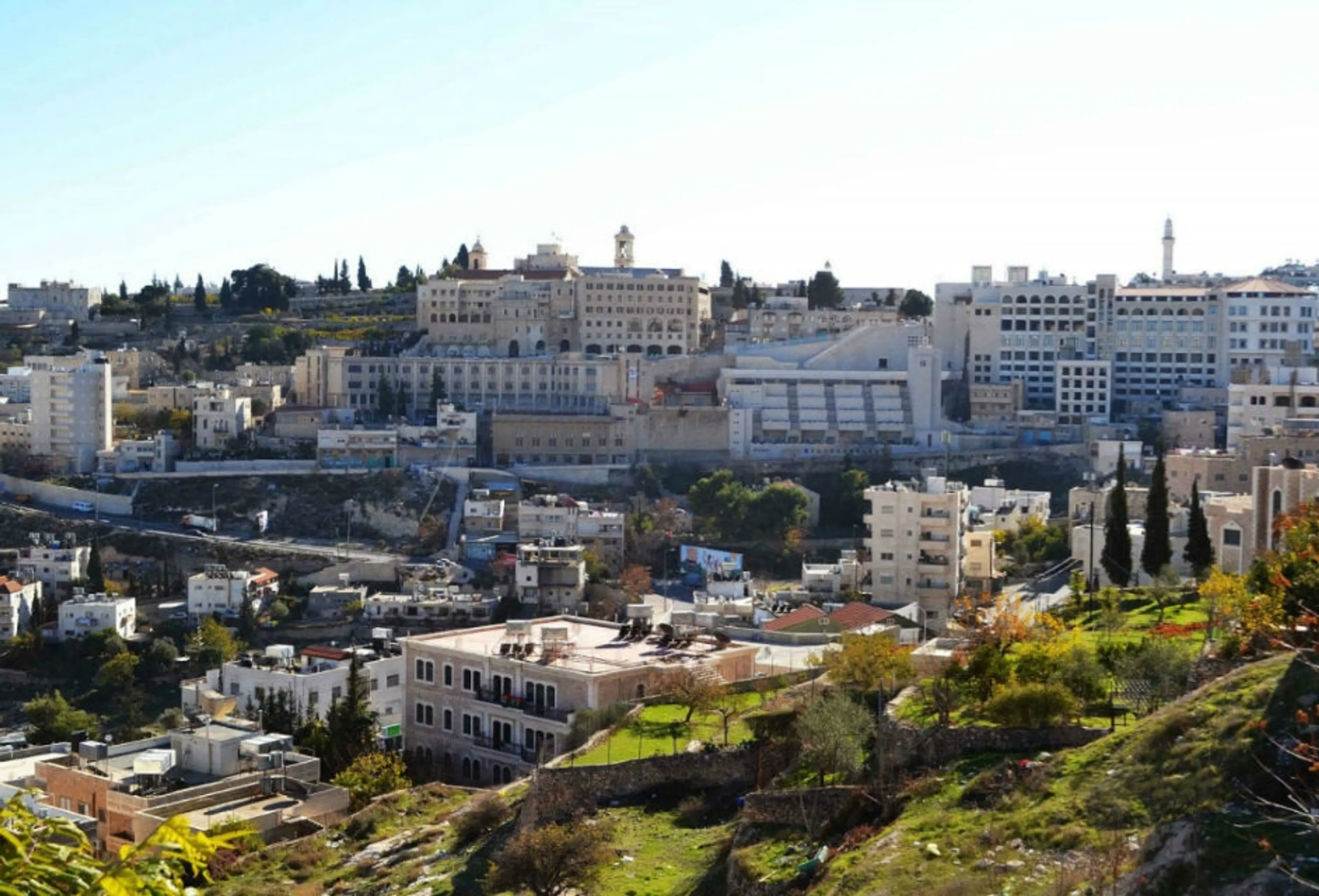
Bethlehem
The birthplace of Jesus of Nazareth and a major Christian pilgrimage destination
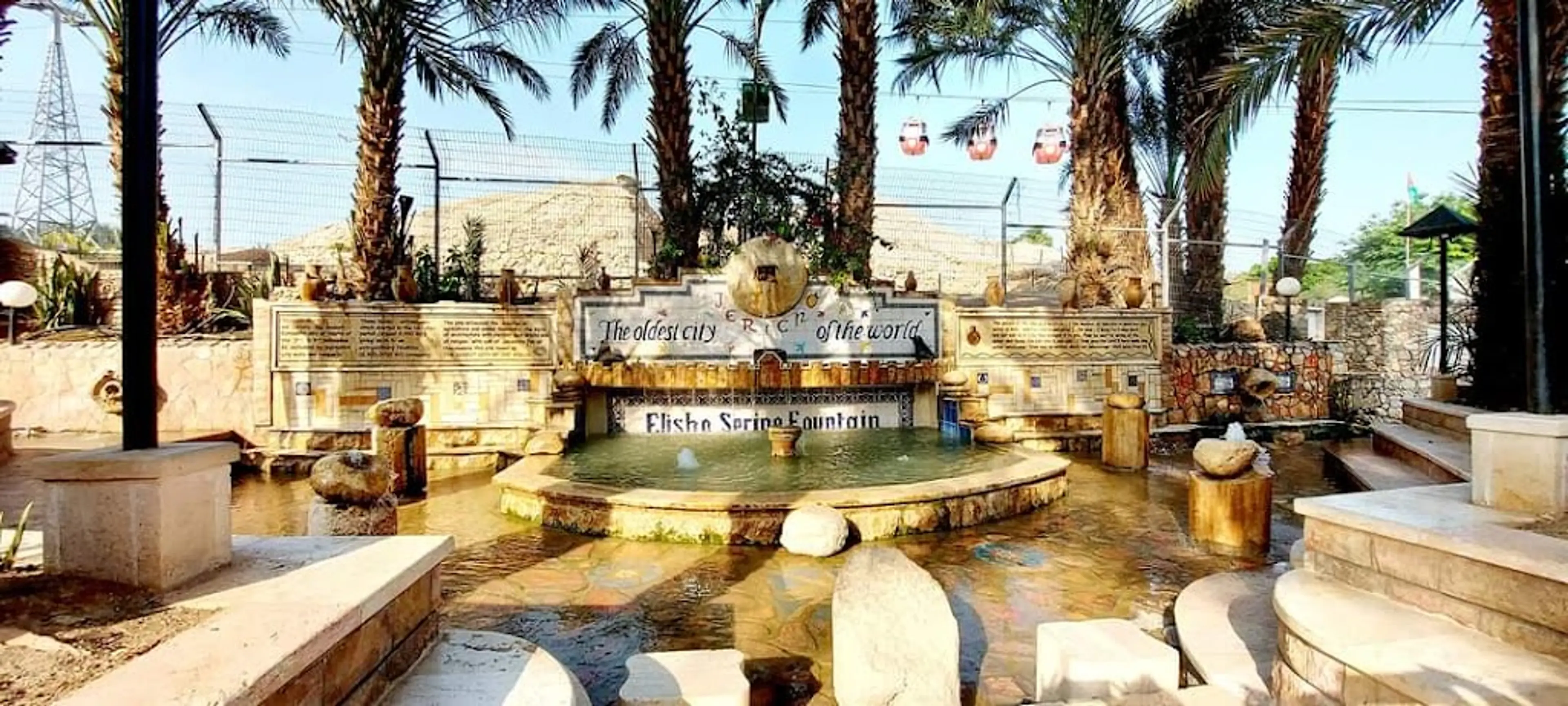
Jericho
One of the oldest inhabited cities in the world, with archaeological evidence dating back more than 11,000 years
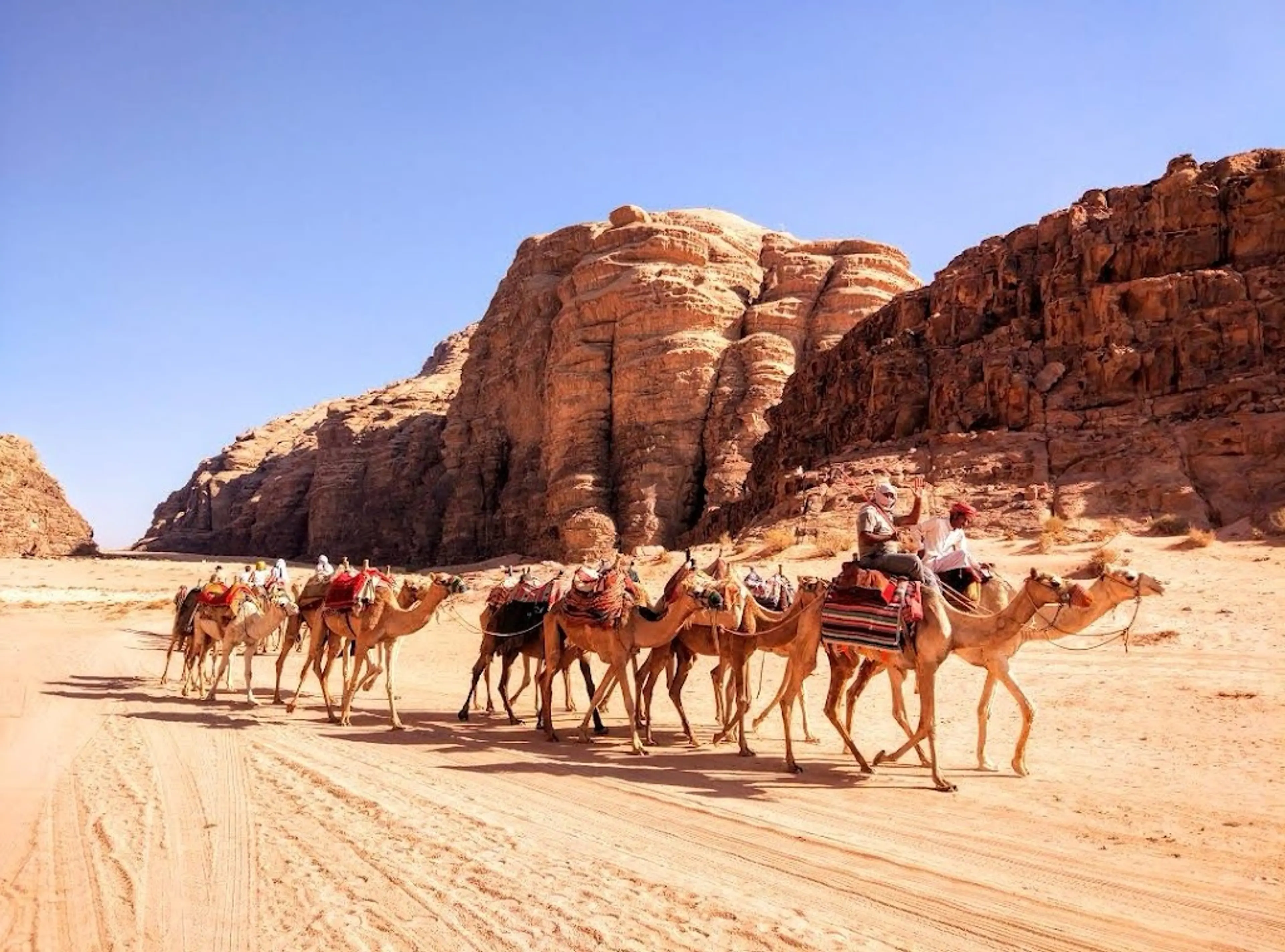
Wadi Rum
A protected desert wilderness in southern Jordan, known for its dramatic sandstone mountains

Aqaba
A Jordanian port city on the Red Sea's Gulf of Aqaba, known for its beach resorts and water sports

Tel Aviv
Israel's financial center and technology hub, known for its Bauhaus architecture and beaches
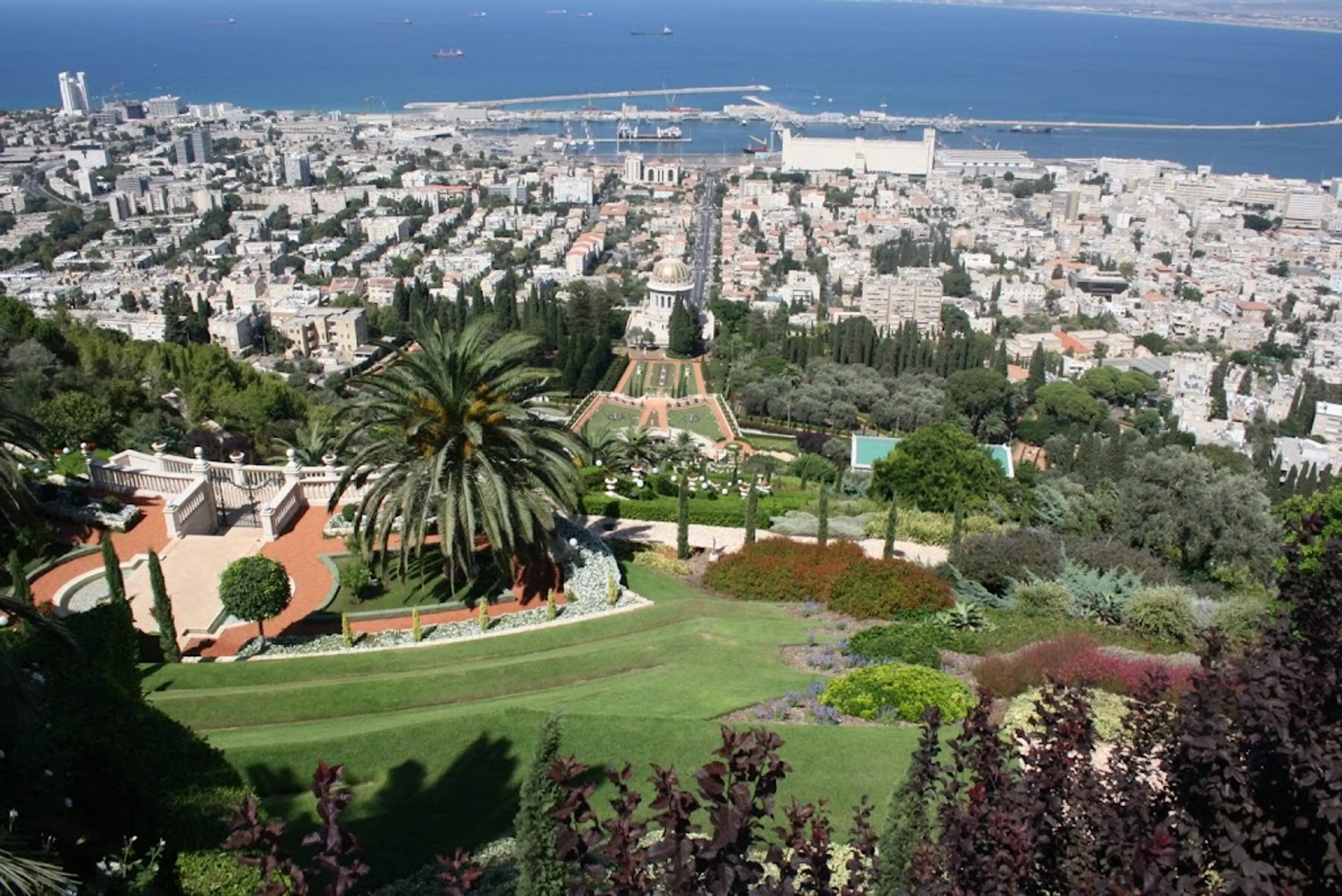
Haifa
A northern Israeli port city known for its stunning Baha'i Gardens

Beirut
The capital of Lebanon, known for its vibrant nightlife, shopping, and food scene